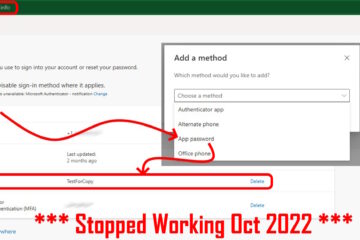Humans are clever, and we have devised unique and interesting ways to exchange products and services through an agreed understanding of the value of things. Let’s explore how people have paid for the things they want and need over time, starting with the least technologically advanced up to what we use now and beyond.
Payments Before Paper and Coins
Before wallets, coins, and paper, people devised informal trading systems to obtain things they couldn’t find or produce themselves. Today, we call this kind of practice bartering or trading. Since there wasn’t yet a good way to repeatedly produce physical currency, anything from food and spices to materials like clothing and guns could be exchanged with another person. The trading people would set the value of their goods or services.
Bartering is less common today, but it lasted a long time as a primary payment method.
Coins
We don’t know precisely how long coins have been around, but we know that the earliest coins found date back to the fifth or sixth century BC. Archaeologists recognize the items as coins because they have similar stamps on them, which likely recognize an authority that allowed them to be produced and valued in a specific way.
So, why were coins first? The answer is simple: the printing press we know today wouldn’t be available for centuries, and humans learned how to use and shape metals with small tools over time. Many ancient civilizations produced and recognized stamped metal as coins, with the Lydians of southwestern Asia possibly starting the idea and the Greeks and Persians later putting it into place.
Coins continued to spread in part because the concept of coinage was more practical than a bartering system. Coins could be stored in pouches, pockets, or boxes, and while they still had a little weight to them, bartering required carrying the things you could trade with you, which often took a lot more energy and resources.
Paper Money
The beginnings of paper money that we know today started in China during the eighth century. China, Rome, and other major countries and cities have artifacts and written records noting that paper money existed. However, it wasn’t used by everyday people due to the challenges of mass producing it.
Paper money also made currency a bit more complicated. When coins were produced, some of their value came from having an actual weight in a precious metal, which could be exchanged. Paper did have value, but it wasn’t exactly like precious metal. Generally speaking, paper money required some social agreements or government backing to ensure that the money was, in fact, worth something. Much like coins, paper money also opened the doors to making fake money easier to produce.
But paper money proved invaluable. The development of easier methods to produce well-regulated money, like the printing press, revealed the potential of this new kind of currency. Paper money was easy to store as it was lightweight, and precious metals could be used for industrial and other purposes that required metal.
Cheques
Many of our readers have likely used (or still use) cheques. One of their benefits is that they reduce the risk to the buyer of carrying coins and paper money along, which could get stolen. While a chequebook could get stolen, the carrier could just call the bank and block it. Cheques also offer an easier organizing method with a ledger and cheque copies to help people track their budgets. We wouldn’t call them technologically advanced for the recipients as the business or person still has to deposit them at a bank, though at least mobile deposits using our phones recently became available.
Debit and Credit Cards
Debit and credit cards heralded a technological leap compared to cheques. These cards use a magnetic strip that card reading machines use to recognize your account number and prepare a money transfer.
In the last couple of decades, chip cards have become much more common as a security method to avoid cloned cards. Some cards also allow the user to pay by tapping the card near a sensor, reducing the overall wear on a card that may feel the squeeze of a card machine thousands of times.
Bitcoin and Electronic Payments
Bitcoin, considered a truly electronic payment method, is a new frontier in payment methods that has the potential to go beyond government production and regulation. The process of obtaining Bitcoin used to be rather unique, with software mining needed to unlock it. Now, one can buy Bitcoin and other electronic currency through one of many wallet programs, though there is a continued need to “mine” for Bitcoin, which isn’t for the average user.
It is hard to find retailers who accept Bitcoin, but it is increasingly commonplace, especially online. Since Bitcoin is largely unregulated, the price is rather volatile, with major swings to the tune of tens of thousands of dollars. Nevertheless, many people believe Bitcoin will be a favourable option in the future as government spending and international relations cause institutionally produced currency to slide in value.
Governments are also starting to get in on the action, with the potential for a central bank digital currency, or CBDC, on the horizon. The concept of a digital dollar certainly has its positives and negatives, but, generally speaking, it could serve as a future payment method that doesn’t work much differently than a debit card.
Conclusion
Payment methods have changed with the times and quite rapidly over the past few decades. We’ve gone from exchanging animal skins for tools to tapping a phone or debit card on a screen to using phone bill casino payment options that take your payment securely. While it’s impossible to say what the future of payment methods will look like, it’ll certainly be even more convenient.




0 Comments